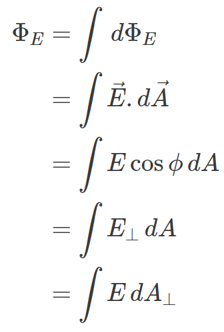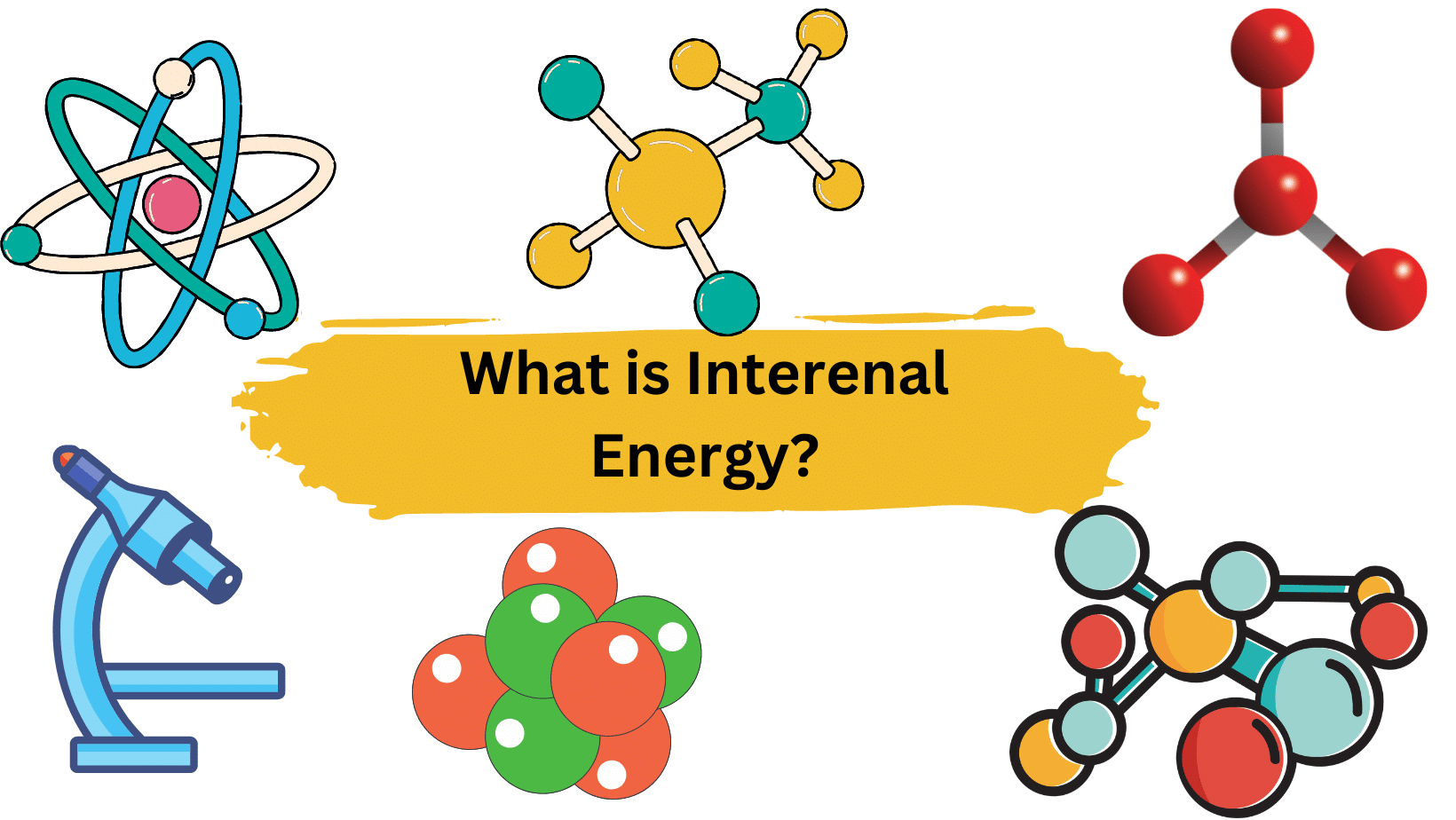Gauss’s Law is a fundamental principle in electromagnetism that states that the total electric flux through a closed surface is proportional to the charge enclosed within the surface. Mathematically, it can be expressed as:

ΦE is the electric field q is the enclosed electric charge and ε0 is the electric permittivity of free space.
where Φ is the electric flux, Q is the charge enclosed within the surface, and ε₀ is the vacuum permittivity (a constant with a value of approximately 8.854 x 10-12 Farads per meter). In essence, Gauss’s Law states that the distribution of electric flux through a closed surface is determined by the distribution of electric charge inside the surface. This principle provides a way to calculate the electric field created by a given distribution of electric charge and is a cornerstone of the mathematical theory of electromagnetism.
Significance of Gauss’s Law
Gauss’s Law has significant practical and theoretical importance in the field of electromagnetism. Here are some of the key applications and implications of this law:
- Calculating Electric Fields: Gauss’s Law provides a convenient method for calculating the electric field created by a distribution of electric charge. By using this law, it is possible to determine the electric field at any point in space, given the distribution of charge that is producing the field.
- Understanding Electrostatic Systems: Gauss’s Law is a fundamental principle that helps to explain many electrostatic phenomena, such as the behaviour of electric charges in a capacitor and the interaction of electric charges with conductors and insulators.
- Simplifying Calculations: Gauss’s Law provides a simple and elegant way to calculate electric fields and electric flux, without having to solve complicated differential equations. This makes it a useful tool for engineers and scientists who work with electromagnetic systems.
- Theoretical Basis of Electromagnetism: Gauss’s Law is one of Maxwell’s equations, which forms the theoretical basis of classical electromagnetism. These equations describe the behaviour of electric and magnetic fields and their interactions with matter and are essential for understanding a wide range of electromagnetic phenomena.
Electric Flux
Consider a flat area A perpendicular to a uniform electric field E. The electric flux through the area is




Important Points
- The law implies that isolated electric charges exist and that like charges repel one another while unlike charges attract.
- The law is about the relationship between electric charge and the resulting electric field
- The net electric flux through any closed surface is equal to 1⁄ε times the net electric charge enclosed within that closed surface.
Related Topics
Direct Current
Alternating Current
Biot Savart Law: Statement, Derivation & Applications
Conductor And Insulator
Malus Law- Definition, Concept, and Examples
Summary
- Gauss’s Law relates electric flux and electric charge in a closed surface
- The law states that the electric flux through any closed surface is proportional to the electric charge enclosed within that surface
- Electric flux is a measure of the flow of an electric field through a surface
- The formula for Gauss’s Law involves the electric field, surface area, and charge enclosed
- Gauss’s Law has many practical applications in the design of electrical devices
- Understanding Gauss’s Law is essential for those studying electromagnetism and related fields
Frequently Asked Questions
1. What is electromagnetic force?
When a conductor is put in a magnetic field and current runs through it, the magnetic field and the current interact to create a force. This force is known as the “Electromagnetic force“. The direction of the current, magnetic force and flux are determined using Fleming’s left-hand rule.
2. Define magnetic pole?
The magnetic poles are the parts of the magnetic field where the magnet’s power is greatest. If a magnet is positioned in a free-turning position, it will rotate in a north-south direction. The north-seeking pole, or north pole, of the magnet, is the end that faces north.
3. Explain the interaction between electricity and magnetism?
Electromagnetism is the study of the interaction between magnetism and electricity. A magnet’s movement may create energy. A magnetic field may be created by the passage of electricity.
4. What are the types of magnets?
There are three main types of magnets: temporary, permanent, and electromagnets.
Solved Numerical Problems
Problem 1: An electric charge of +10 µC is located at the center of a cube with sides of length 0.1 m. What is the electric flux through each face of the cube?
Solution:
- We can begin by using Gauss’s Law to find the electric flux through each face of the cube.
- According to Gauss’s Law, the electric flux through a closed surface is equal to the charge enclosed within the surface divided by the permittivity of free space (ε₀).
- In this case, we have a cube with sides of length 0.1 m, so the surface area of each face is (0.1 m)² = 0.01 m².
- The cube encloses a charge of +10 µC, so the charge enclosed within each face is +10 µC/6 (since there are six faces), or approximately +1.67 µC.
- Finally, we can use Gauss’s Law to find the electric flux through each face. We have: Φ = Q/ε₀A = (+1.67 µC) / (8.85 x 10^-12 C²/Nm² x 0.01 m²) ≈ 1.89 x 10^9 Nm²/C.
Therefore, the electric flux through each face of the cube is approximately 1.89 x 10^9 N*m²/C.
Problem 2: A long, straight wire carries a uniform charge density of 2.5 x 10^-6 C/m. What is the electric field at a distance of 4 cm from the wire?
Solution:
- We can use Gauss’s Law to find the electric field around the wire.
- According to Gauss’s Law, the electric field is related to the charge density and the distance from the wire.
- We can choose a Gaussian cylinder with a radius of 4 cm and a length of 1 m (since the wire is infinitely long).
- The charge enclosed within this cylinder is equal to the charge density times the length of the cylinder.
- In this case, the charge enclosed is (2.5 x 10^-6 C/m) x 1 m = 2.5 x 10^-6 C.
- Finally, we can use Gauss’s Law to find the electric field: Φ = Q/ε₀ = E x A/ε₀, where A is the area of the circular face of the cylinder. The area is equal to πr^2, where r is the radius of the cylinder.
- Plugging in the values, we have E x π(0.04 m)^2 / ε₀ = 2.5 x 10^-6 C.
- Solving for E, we get: E = 2.5 x 10^-6 C / (π(0.04 m)^2 x ε₀) ≈ 2.23 x 10^4 N/C.
Therefore, the electric field at a distance of 4 cm from the wire is approximately 2.23 x 10^4 N/C.
Possible Exams Questions
- State Gauss’s Law and explain its significance in electrostatics. (Hint: What does Gauss’s Law say about the relationship between electric flux and electric charge?)
- A sphere of radius 0.1 m has a charge of 1 nC distributed uniformly on its surface. Calculate the electric field at a point 0.2 m away from the centre of the sphere using Gauss’s Law. (Hint: What closed surface would you choose to apply Gauss’s Law?)
- A cylinder of radius R and length L has a uniform charge density ρ. Use Gauss’s Law to calculate the electric field both inside and outside the cylinder. (Hint: What closed surface would you choose to apply Gauss’s Law?)
- Explain the concept of electric flux and its relationship with Gauss’s Law. (Hint: What is the relationship between electric flux and the electric field?)
- A point charge of +2 μC is located at the centre of a cube of side length 0.1 m. Use Gauss’s Law to calculate the electric flux through one of the faces of the cube. (Hint: What closed surface would you choose to apply Gauss’s Law?)
Multiple Choice Questions
- What is Gauss’s Law?
A) Law of reflection B) Law of gravitation C) Law of conservation of energy D) Law of electrostatics
Answer: D) Law of electrostatics
- What does Gauss’s Law state?
A) The net electric field passing through a closed surface is zero B) The net electric field passing through a closed surface is nonzero C) The net magnetic field passing through a closed surface is zero D) The net magnetic field passing through a closed surface is nonzero
Answer: A) The net electric field passing through a closed surface is zero
- Gauss’s Law can be used to calculate which of the following?
A) Electric potential B) Electric field C) Electric charge D) Electric current
Answer: C) Electric charge
- Which of the following statements is true about Gauss’s Law?
A) It only applies to electric fields in a vacuum B) It can only be used to calculate the electric field inside a closed surface C) It can be used to calculate the electric field both inside and outside a closed surface D) It only applies to point charges
Answer: C) It can be used to calculate the electric field both inside and outside a closed surface
- What is the formula for Gauss’s Law?
A) ∇×E = 0 B) ∇·E = ρ/ε0 C) ∇×B = μ0J D) ∇·B = 0
Answer: B) ∇·E = ρ/ε0
More Interesting Topics
- BCl3 Lewis Structure in four simple steps - November 1, 2023
- PH3 Lewis Structure in four simple steps - October 8, 2023
- PF3 Lewis structure in four simple steps - September 24, 2023



